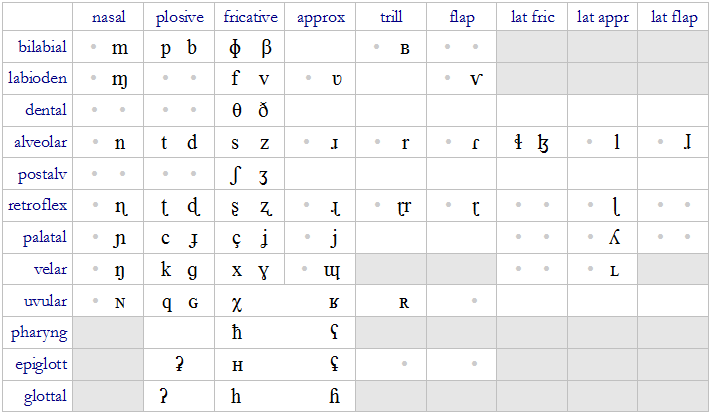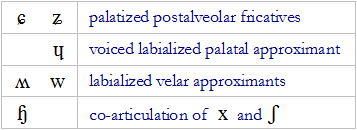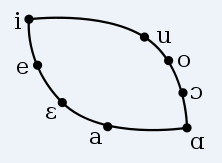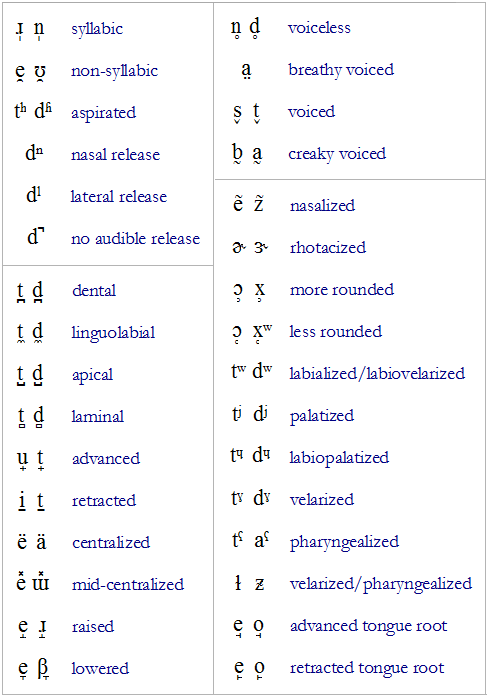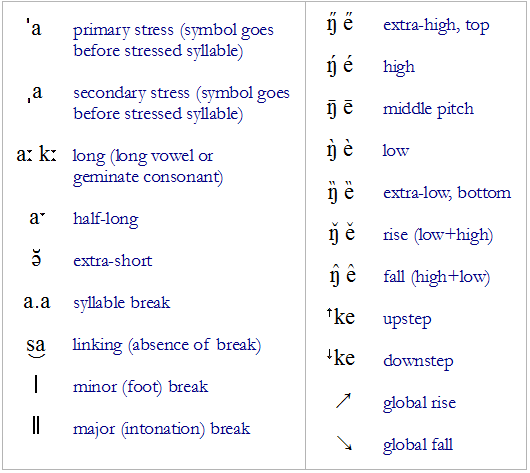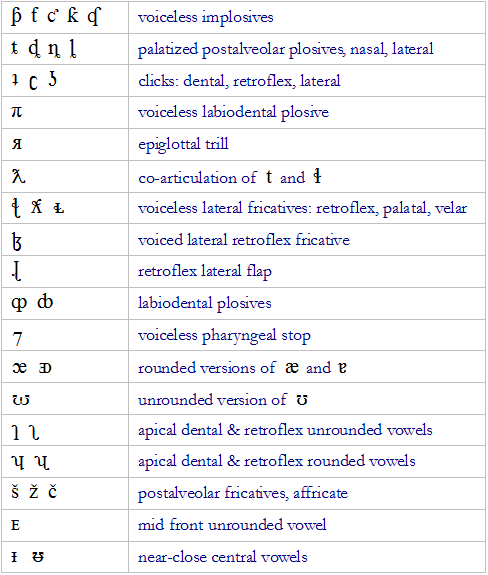The International Phonetic Alphabet (IPA) is probably the most thorough system so far devised for the representation of phonemes and phonetic details. It has become the world standard for linguists etc. It uses many Latin and a few Greek glyphs, and so has a European appearance. In most cases, however, there is no featural consistency in the alphabet, and renditions of speech can easily look complicated and unattractive. The IPA was first published in 1897 and the last revision was in 2005.
1 Consonants
1.1 Pulmonic consonants
The major contribution of the IPA is the clear organization of consonants into their manner and place of articulation. Where symbols appear in pairs, left–right represents voiceless–voiced phonation. Grey dots denote phonemes which must be represented with diacritic modifiers (see below). Empty places are rare phonemes. Greyed boxes denote pulmonic articulations judged to be impossible. [Zoom in if necessary.]
The picture below shows the regions within the mouth referred to in the chart above. Note how different parts of the tongue (B, C, D) help define different consonantal regions.
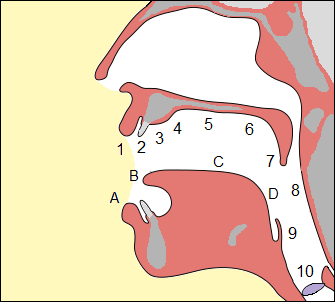
Active Passive A labial 1 bilabial 2 labiodental B apical 1 linguolabial 2 dental 3 alveolar 4 postalveolar 5 retroflex C dorsal 5 palatal 6 velar 7 uvular D radical 8 pharyngeal 9 epiglottal glottis 10 glottal
1.2 Combination consonants
Co-articulated consonants involve combinations of manner and/or place. Affricates are plosive-fricative combinations, where the second element flows naturally from the first (they share a common place of articulation). Two-letter co-articulations are often grouped with a tie above or below the elements. Note how the back lateral fricatives require two diacritics.
1.3 Non-pulmonic consonants
These sounds are produced using pockets of air inside the mouth, rather than air coming from the lungs.
2 Vowels
The vowel symbols are arranged according to the position of the tongue. Where symbols appear in pairs, left–right represents unrounded–rounded.
The cardinal vowels are useful reference phonemes differentiated by tongue-height and forward–back:
3 Diacritics
3.1 Segmental diacritics
To further refine descriptions of sounds, diacritics may be added. For letters with descenders, below-line diacritics may be written above. Note that for the featural system of the IPA, lips are imagined to the left, and glottis to the right.
3.2 Suprasegmental diacritics
Other markings can be used to denote rhythm, length of sound and tone.
4 Other phonetic symbols
4.1 Extensions to the IPA
Some other symbols have been added as an extension of the IPA, mostly for use in speech pathology. The following are useful generally.
4.2 Non-IPA
Some obsolete IPA and non-IPA symbols are commonly seen in linguistic literature. For some, a point in their favour is they can represent phonetic events more simply than the IPA, which otherwise requires diacritics (often more than one, which makes clutter). Some, however, represent phonemes whose existence is disputed.
